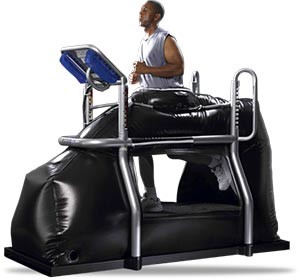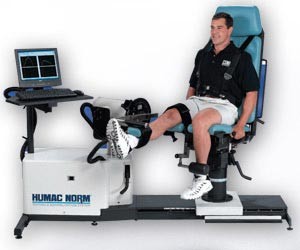Athletic Trainer Rehab Equipment
As an athletic trainer you will be expected to work alongside other medical health professionals to provide rehabilitation and care services to a wide range of patients. In order to do this effectively, you will need to use a number of techniques that reduce the impact of the injury, and ensure the client is able to reach their treatment goals. To optimize recovery times, athletic trainers regularly use specialist rehabilitation equipment, these devices enable a patient to maintain a good level of fitness whilst their injury heals. Here are some examples of Athletic Trainer Rehab Equipment:
Hi-Low manual mobilization tables

A manual mobilization table is used to treat spinal injuries and increase joint function. They are relatively simply to operate and no specific qualifications are needed if you intend to use one in a course of treatment. The entire table can be raised or lowered by the operator using a pedal, making it easier for patients to mount and dismount if they are affected by an injury.
A manual mobilization table is composed of three separate sections, the head, center and neck. They are generally found in hospitals and physicians clinics, although some universities may also have an athletic training lab, where tables are used to teach students. In these instances, the educational facility may allow qualified athletic trainers and patients to use their tables outside of teaching hours.
Anti-gravity treadmills

Anti-gravity treadmills are highly advanced pieces of equipment, they are mainly used in top sports facilities to promote the recovery of world-class athletes. No specific qualifications are needed to operate one, but due to their technical nature you are likely to undertake a number of training sessions before assisting a client to train.
Anti-gravity treadmills are considered to cause less pain to an athlete during their rehabilitation, mostly because the extra support provided reduces the impact of exercise. This is vital for patients who have suffered a plantar fascia tear type injury and experience significant pain when trying to bear their own body-weight on the effected foot. As patients have more confidence and less fear of working out, an anti-gravity treadmill can bridge the transition back into full training mode.
HUMAC NORM Testing and Rehabilitation System

This machine is considered to be at the cutting edge of today’s athletic trainer rehabilitation equipment, it is currently found mostly in research facilities and clinics. However, some are also present in universities where they are used both for treatment purposes and training students. The function of the HUMAC NORM is twofold, primarily it was designed to help patients who had sustained a sports injury, but it can also enable uninjured athletes to test their fitness levels, and stay in shape throughout a sports season.
This system requires very little prior knowledge on the part of the operator as it uses intuitive software. There are over 22 different programmable options, so as a trainer you simply select the most appropriate exercise pattern for your patient and then monitor the session.
Quad bench

The quad bench is an extremely versatile piece of athletic trainer rehabilitation equipment that most students and professionals will be very familiar with. It is a chair that is anatomically designed for patients to work on their leg muscles, whilst their upper and lower back areas are supported. Patients can be laid in a ventral position or sat up, depending on their injury. The quad bench also includes support handles and can often be angled to suit each client’s needs.
Quad benches are basic items of equipment for medical professionals and you will not need any supplementary training. These exercise chairs are found in a range of settings, from physicians’ offices, to community facilities and hospital clinics.
Article featured image source: Toronto Physiotherapy (torontophysiotherapy.ca)


No comments yet.
Add your comment